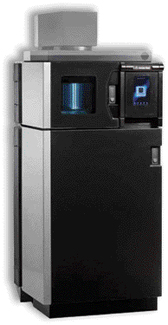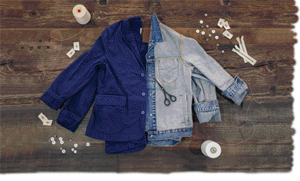Ensuring the quality of goods produced in a textile plant will always be of utmost importance to manufacturers, especially in today’s globally competitive market. To be sure, off-quality goods can cause problems in downstream manufacturing processes. And making sure today’s ever-savvy consumer is happy with the quality of finished goods and encouraging repeat business is always a challenge for brands and their suppliers. Fortunately, many technology companies are updating and creating new testing equipment to help manufacturers efficiently and consistently produce first-quality goods throughout the supply chain.
Yarn Production
Germany-based Textechno H. Stein GmbH & Co. KG recently introduced its Covatest capacitive evenness tester to the U.S. market through its distributor Measured Solutions Inc., Greenville. The Cova-test is suitable for sliver, roving and spun-yarn testing and has an optional Hairiness Module. The instrument uses capacitive measuring to analyze the mass irregularity along a sample and generates a mass spectrogram. The Hairiness Module features a modern optical sensor that uses laser illumination.
The company reports the tester’s simple Windows-based software and fully automatic operation make it easy to use. All numerical and statistical data are stored in a structured query language (SQL) database for further evaluation, and the Covatest can generate graphic output including diagrams of mass variation per unit length and hairness variation per unit length; and spectrograms, histograms and coefficient of variation CV(L) curves for mass variation and hairiness.
Switzerland-based Rothschild Instruments, also represented by Measured Solutions, recently introduced the Electronic Yarn R-3000 tensiometer – an updated version of its R-2000 instrument, featuring all the well-known features of its predecessor along with some notable improvements. According to the company, a new touch screen makes handling and testing the yarn easier than ever, and a new wireless version will be available in early 2014. Features include: digital and analog readings; two tension channels; simultaneous dual tension measurements; 10- to 1,200-second time base options with graphic displays on the instrument; high-precision measuring without yarn deflection during measurement; and a short 300-hertz response time for all short peak time tensions to be recorded. Rothschild reports the machine offers an accuracy of ±2 percent in its measuring range of 0.01-200,000 centinewtons. The machine’s measuring heads allow a variety of yarns to be tested including natural fiber as well as textured, monofilament, industrial, glass, carbon and other man-made fiber yarns.
At the recent ShanghaiTex 2013 exhibition in Shanghai, Switzerland-based Loepfe highlighted its Loepfe Yarnmaster® Zenit FP yarn clearer featuring the optional LabPack SFI/D off-standard bobbin detection concept. According to the company, LabPack enables 100 percent of production to be monitored and managed – in key areas such as hairiness, neps, CV irregularity and the imperfection index (IPI) – 100 percent of the time. Loepfe reports that the Yarnmaster Zenit is suitable for specialty and effect yarns such as core, slub and multitwist yarns in addition to standard yarn types. The Yarnmaster also features three dedicated sensors – one optical sensor to detect neps, short thick, long thick and thin places (NSLT) faults; a second optical sensor to look for colored foreign matter; and a triboelectric sensor that is able to detect white and transparent synthetic fibers.
Downstream Testing
X-Rite Inc., Grand Rapids, Mich., has introduced the Ci6x line of handheld spectrophotometers for color measurement of materials including textiles, automotive, packaging, plastics and paints. The company reports the tools provide improved color control for materials, in-process parts and finished goods, along with an audit trail for facilities that operate multiple sites. The spectrophotometers are NetProfiler 3.0-enabled, ensuring that the instruments are calibrated to a single centerline standard and that color measurements taken across the supply chain are accurate and reliable. NetProfiler also allows users to share, validate and audit data across multiple devices. In addition, the Ci64UV model offers ultraviolet (UV) illumination and is suitable for measuring textiles and other materials containing optical brightening agents.
Israel-based Elbit Vision Systems Ltd. (EVS) recently introduced C-Belt, an inspection system for narrow safety belts such as automotive seatbelts, safety harnessing for fire and rescue, and safety tie-downs for transportation. C-BELT detects, identifies and labels common manufacturing defects on both sides of a safety belt. According to EVS, its multi-angle viewing lines are able to detect all visible defects including ends out, broken picks, misspicks, loopy selvage, loose filament, spots, stains, holes, mono-tail slubs, bulges, dip-ins and knots. The full-color, automated inspection system works in conjunction with EVS’s online Optimization & Cut control system.
SDL Atlas, Rock Hill, S.C., has modified its Automatic Gas Controller (AGC) to meet new criteria in the recently revised ASTM International D6413/D6413M Standard Test Method for Flame Resistance of Textiles. The test methods are used to determine vertical afterflame time, afterglow time and char length. The modification addresses the distance between the solenoid valve and burner to ensure the flame does not linger beyond the termination of the test.
The AGC is featured on SDL Atlas’ Vertical Flammability Chamber and the Atlas HVUL2 Horizontal Vertical Flame Chamber. All new equipment is supplied with the new AGC, and companies with existing equipment may request a solenoid retrofit kit to easily convert their machines.
James H. Heal & Co. Ltd., United Kingdom, recently introduced the TruFade lightfastness tester and the GyroWash2 washing and dry cleaning colorfastness tester.
According to Heal, TruFade’s design and software package both are innovative and easy to operate. The machine, made from aircraft-grade aluminium components, houses nine triangular test specimen holders that allow for up to 27 specimens to be tested simultaneously, offering an exposure area totaling 1,640 square centimeters. The software was designed with touch-screen controls similar to those for a smartphone; and can track lamp and filter life, and fading progress. Other features include: an easy-access water chamber; auto-stop function; and a wide-opening test chamber for easy sample loading and unloading.
 James H. Heal reports its TruFade lightfastness tester simplifies lightfastness testing and produces accurate and consistent results.
James H. Heal reports its TruFade lightfastness tester simplifies lightfastness testing and produces accurate and consistent results.
“The entire design process has been based on how customers use the instrument and on striving to make testing as simple as possible,” said Craig Taylor, test materials manager, James H. Heal. “We carry out extensive testing ourselves during product development to emulate the testing process and typical environmental conditions. This gives you the reassurance you need to be sure that this instrument will perform in line with relevant lightfastness testing standards.”
GyroWash2 is available as a single-bath eight- or 20-position model, and each position can hold a small or a large test vessel. The company designed a new zero-force “insert and rotate” mechanism for simple vessel loading and unloading. An intuitive UniController with auto start function makes it easy for a novice to perform tests to ISO and AATCC standards, the company reports.
November/December 2013









